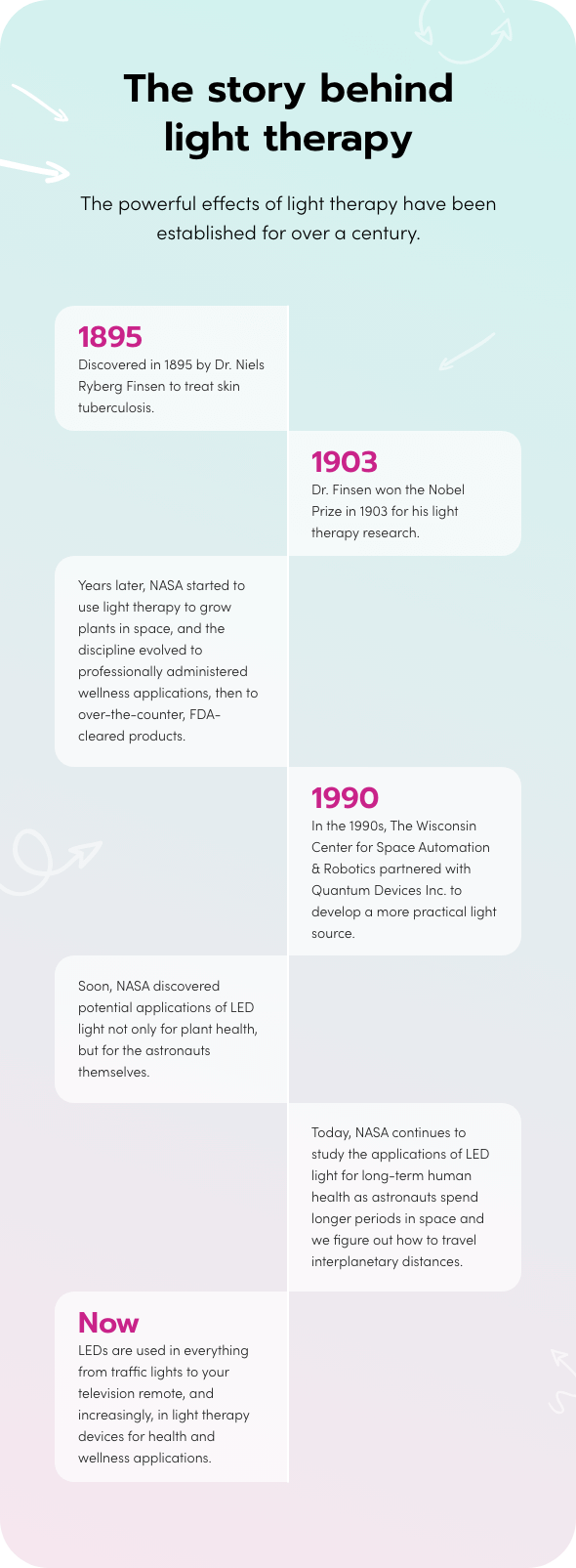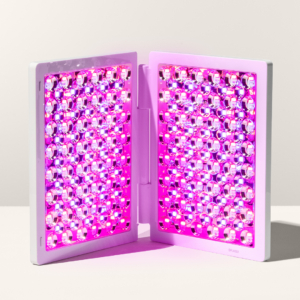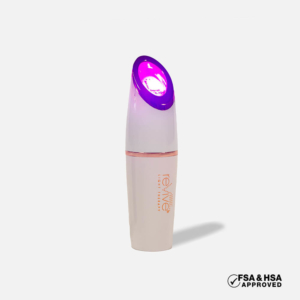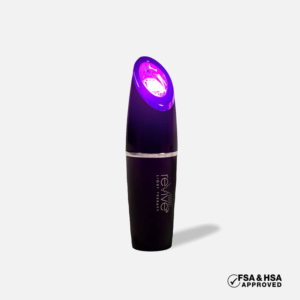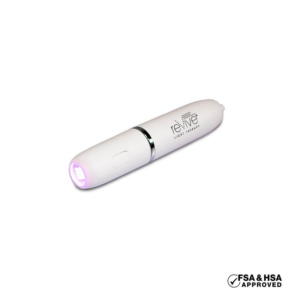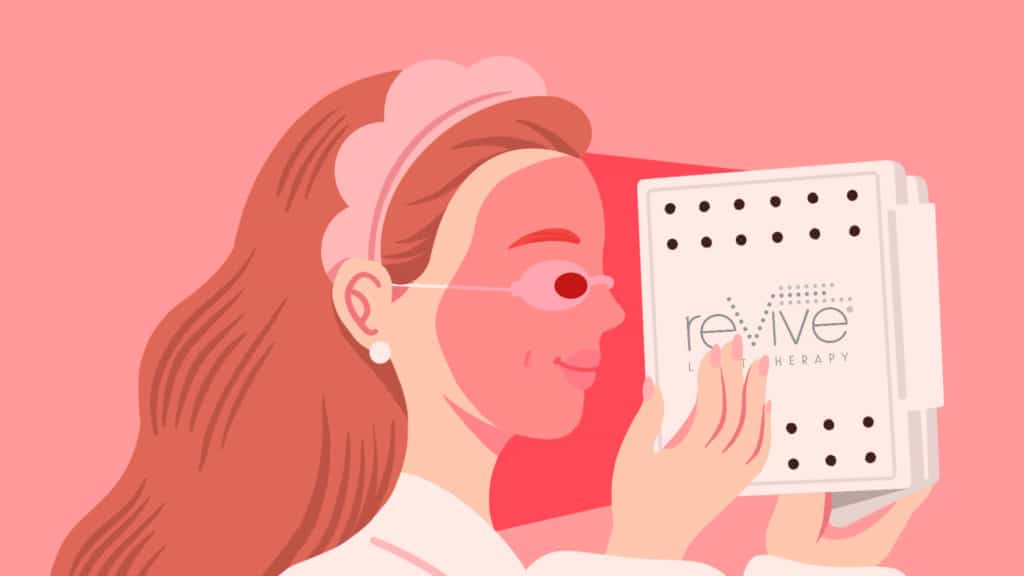
Discover the science behind LED light therapy and what it can do for you.
The story behind light therapy
The powerful effects of light therapy have been established for over a century, being first discovered in 1895 by Dr. Niels Ryberg Finsen to treat skin tuberculosis. Dr. Finsen won the Nobel Prize in 1903 for his light therapy research.
Years later, NASA started to use light therapy to grow plants in space, and the discipline evolved to professionally administered wellness applications, then to over-the-counter, FDA-cleared products. Thanks to the availability of this technology, you can now treat wrinkles, pain, acne and more in the comfort of your home.
How did we get here, and how do we know light therapy is effective? Let’s take a look at the science behind LED light therapy technology.
Light therapy benefits for the body: from earth to space and back again
During the Space Shuttle era, NASA wanted to study how plants grow in space. However, the light sources used to grow plants on Earth didn’t fit their needs; they used too much power and created too much heat.
In the 1990s, The Wisconsin Center for Space Automation & Robotics partnered with Quantum Devices Inc. to develop a more practical light source. They used light-emitting diodes (LEDs) in their invention, the Astroculture3. The Astroculture3 is a plant growth chamber, using LED lights, which NASA used successfully on several Space Shuttle missions.
Soon, NASA discovered potential applications of LED light not only for plant health, but for the astronauts themselves. Living in low gravity, human cells don’t regenerate as quickly, and astronauts experience bone and muscle loss. So NASA turned to photobiomodulation therapy (PBMT).
Human biology and light (Photobiomodulation Therapy, or PBMT)
There’s a good reason why it feels so good to walk in the sun. The benefits of light for our bodies are many. Photobiomodulation (PBMT) uses technology to provide many of these same benefits, without the dangers of excessive direct sun exposure.
PBMT involves exposure to high-intensity, wavelength-specific light to stimulate cellular function. It acts on the mitochondria and other key parts of a cell to essentially boost its metabolism. This action makes cells grow and multiply faster, increases blood flow, and enhances wound healing. PBMT has even been shown to promote bone healing following dental implants.
PBMT, like NASA’s plant growing chamber, uses LEDs. Research shows that LEDs cause human cell cultures in a lab to grow at five times their normal rate. Today, NASA continues to study the applications of LED light for long-term human health as astronauts spend longer periods in space and we figure out how to travel interplanetary distances.
LED light therapy terms to know
The science of LED light technology is still evolving. Research is underway to better understand its effects on the human body and could lead to further applications for health and wellness. As it evolves, different people and companies use different terminology. Some of the terms you might hear to refer to LED light therapy include:
- Low-Level Light Therapy
- Infrared (or Near-Infrared) Light Therapy
- Low-power laser therapy (LPLT)
- Soft laser therapy
- Low-intensity laser therapy
- Low-energy laser therapy
- Cold laser therapy
- Biostimulation laser therapy
- Photobiomodulation
- Photo-biotherapy
- Therapeutic laser
- Monochromatic infrared light energy
Try not to let the vocabulary overwhelm you. The important things to know are what color (wavelength) each device uses and whether it’s cleared by the FDA.
How light therapy is used now
LEDs are tiny lightbulbs that lack filaments. Instead, they rely on a semiconductor material, so they build less heat and last far longer than a traditional lightbulb, while also putting out much more light. LEDs are used in everything from traffic lights to your television remote, and increasingly, in light therapy devices for health and wellness applications.
Health and wellness light therapy devices use LEDs that emit light in the blue, amber, red, or infrared range of the light spectrum, depending on the purpose. Energy wavelengths are shorter toward the blue end of the spectrum and longer toward the infrared end of the spectrum. The human eye can see light from about 380 nm (at the blue end) to about 750 nm (at the red end). The infrared waves can penetrate deeply to relieve muscle and joint pain, for example, while blue light works closer to the skin’s surface.
 Note that infrared actually lies outside the visible wavelength spectrum, so you cannot see the light emitted by infrared LEDs. However, you can use a digital camera to “see” it.
Note that infrared actually lies outside the visible wavelength spectrum, so you cannot see the light emitted by infrared LEDs. However, you can use a digital camera to “see” it.
Light therapy for skincare
Our powerful skincare light therapy devices use infrared, red, blue, and amber lights for maximum results. Whether you’re looking for blue light therapy acne devices or red light therapy anti-aging devices, each device is innovatively designed for easy, effective treatment.
Light therapy for pain relief
Our FDA-cleared, medical-grade light therapy pain relief devices use red light therapy to increase circulation and support healing on the surface, and infrared light therapy to go deep into the skin’s muscles and tissues to reduce pain, stiffness, and soreness.
Put the science of light therapy to work for you
LED Technologies, Inc. has spent nearly two decades refining the technology behind our light therapy devices.
Our dpl®️ and reVive Light Therapy™ products use Deep Penetrating Light (dpl) Technology, working from the inside out to enhance the body’s cell repair mechanism. We’ve identified the wavelengths of light that generate the desired effects naturally within the body’s cellular structure and replicated them with high-power LED lights. We’re now able to remove all harmful and non-productive wavelengths and deliver concentrated doses of the effective ones. Research and consumer studies have demonstrated dramatic effects in pain relief, injury recovery, acne treatment, and anti-aging treatment with light therapy. Our LED light therapy devices have been engineered to medical-grade specifications and are safe for all skin tones.
Find your LED light therapy
LED Technologies’ light therapy devices are easy to use and effective, and provide simple, reliable solutions to everyday problems such as acne, wrinkles, and pain relief. Explore our light therapy products and find the device that works best for you.
